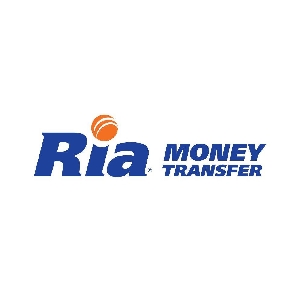It is easy to be confused, especially for new businesses and customers, when first approaching hair industry because of a large range of hair products currently being manufactured and distributed. One of the most common frustration among new customers is to differentiate between raw Indian bundles from other countries’ bundles. In today’s article, we would to elucidate this problem by first of all, providing basic information about the definition of raw Indian bundles as well as natural characteristics of raw Indian bundles to compare them with raw bundles from other countries. Secondly, we would like to further illustrate the applications of raw Indian bundles in manufacturing new hair products. Last but not least, we would exemplify the steps that customers need to take when considering buying from a raw bundles supplier by using K-Hair – the best hair supplier in the market for the time being.

Raw Indian bundles
1. Definition of raw Indian bundles
In this first section, as we have mentioned in the introduction, would give customers a better idea of what are raw bundles and specifically, what are raw Indian bundles as well as their natural characteristics, so that customers can easily understand our further comparisons among different types of raw bundles from different countries in the next section.
1.1. What are raw bundles
Raw hair bundles are essentially raw hair that is bundled together. They have never been chemically treated and the only thing that suppliers have to do when collecting and manufacturing them for sale is cleansing and combing them straight. As a result, raw hair bundles can also be called virgin hair bundles. Besides selling raw hair bundles straight to the customers, most of whom are hair salons in Brazil and Eastern Europe, hair suppliers can also adjust them to fit demands of different customers. For example, raw bundles can be bleached or dyed to cater for Western customers. Raw bundles can be considered the main source of raw materials for manufacturing and processing hair extensions products.
From the definition of raw bundles, we can apply the same way in determining what are raw Indian bundles: raw Indian bundles are basically raw Indian hair bundled together. Their applications are also the same as every other type of raw bundles.

What are raw bundles
1.2. Characteristics of raw Indian bundles
Since raw hair bundles are also virgin hair bundles, we would like to analyze the characteristics of raw Indian bundles from the perspective of virgin hair bundles.
Based on origin, raw Indian bundles can be categorized into two main types: temple hair and hair balls. Temple hair is hair that is cut directly from Hinduism practitioners when they are making a pilgrimage to Hinduism temples located in South India. For these Hinduism practitioners, in order to express their honor and gratitude towards their Gods, as to make their wishes come true, they have to obey the tradition of shaving their head, and the hair that has been cut and collected is called temple hair. Temple hair is remy hair since it is collected and bundled together from different hair donors. It is curly, thin, easy to shed and tangle due to the natural characteristics of Indian hair.

Indian hair materials for raw Indian bundles
Another type of raw Indian hair materials are hair balls. However, hair balls or not raw hair, or virgin hair specifically. This is hair that is collected from households, garbage dumps and kennels, etc. Customers can understand that hair balls are hair that has been shed, and since Indian women have the perception that hair is also part of their body, they develop a habit of keeping their shedding hair and making them into rolls, which are later called hair balls by hair suppliers. Hair balls are also shedding hair during shower session of women, and it got stuck to the kennels or garbage dumps. As a result, hair balls are non-remy hair, and they are considered of the lowest quality. When being collected, they are most of the time dirty and messy altogether.
2. Raw Indian bundles vs raw bundles from other countries
Having already known the characteristics of raw Indian bundles, we would like to move to the next part, which is going to clarify the difference between raw Indian bundles vs raw hair bundles originated from other countries, so that customers can have an overview of all types of raw hair bundles in the market, which facilitates them to choose the most suitable type of raw hair bundles.
2.1. Raw Indian bundles vs raw Chinese bundles
In order to compare raw Indian bundles to raw Chinese bundles, we would like to provide the natural characteristics of raw Chinese bundles first. Raw chinese bundles are hair of ethnic minorities’ women living in mountainous areas. Specifically, there is a Chinese village called “Long Hair Village” of Yao ethnic group, where women have a tradition of waiting their hair to get longer until Lunar New Year, so that they can cut their hair and celebrate the festival with the whole community. Raw Chinese bundles are naturally thin and weak because of unhealthy diets with low vegetables as well as extreme weather conditions.

Chinese hair for raw Indian bundles
However, thanks to the drastic economic development in China, which leads to a significant improvement in the living conditions of the nationals, Chinese women in general do not have the demand to sell their hair for money anymore. As a result, the source of authentic raw Chinese bundles gets scarcer. Chinese suppliers hence have to import raw hair materials from other countries, most of which comes from India due to efficient and convenient logistics network and trading partners. In conclusion, raw Indian bundles and raw Chinese bundles are essentially the same in terms of quality.
With regards to price, as we have already mentioned, since most of raw Chinese bundles are now from India, Chinese suppliers have to bear costs related to import practices as well as manufacturing raw materials. However, with all the favorable conditions like convenient logistics network, highly advanced machines and cheap labor cost, prices of raw Chinese bundles can be considered the most competitive in the current market. In the meantime, raw Indian bundles are considered to have the lowest quality compared to their counterparts, so their prices are also famous for being extremely cheap. Raw Indian bundles and raw Chinese bundles also have an inconclusive encounter in terms of price.
Below are two examples of price lists from raw Indian bundles vs raw Chinese bundles supplier.

Price of raw Chinese bundles

Price of raw Indian bundles
2.2. Raw Indian bundles vs raw Vietnamese bundles
Vietnamese hair has always been famous for its top quality and natural characteristics: sulky, strong, smooth and sustainable. Most of raw Vietnamese bundles are collected from people living in mountainous areas, where the living conditions are almost perfect for the characteristics of hair: mild weather condition, environmentally-friendly lifestyle with fresh and pollutants-free atmosphere. Thanks to these encouraging factors, raw Vietnamese bundles quality is incomparable to its counterparts, including raw Indian bundles.
In terms of price, since raw Vietnamese bundles have such an outstanding quality, their prices are definitely higher compared to those of raw Indian bundles. Nonetheless, customers should feel assured since the prices of raw Vietnamese bundles have always been reasonable and the price rates have been maintained sustainably for a long time. Additionally, wise customers should keep in mind that “The quality is always worth the price”.
Below are two examples of price lists from raw Indian bundles vs raw Vietnamese bundles, in which raw Vietnamese bundles price is taken from the best Vietnamese supplier in the market currently – K-Hair.

Price of raw Indian bundles from K-Hair
3. Applications of raw Indian bundles
In this section, we would provide some applications of raw Indian bundles as raw materials for further manufacturing hair products. Since raw hair bundles are also virgin hair bundles, their applications are to make all types of weft hair, tape-in extensions, clip in hair extensions, bond hair extensions and micro link extensions.
3.1. Raw Indian bundles are used to make tape-in extensions
Tape-in hair extensions are a semi-permanent attachment method, which basically means that a thin strip of glue would be used to make the tape-in hair extensions sit directly on your natural hair. As a result, this type of hair extensions can only last around 6-8 weeks.
Raw Indian bundles, as well as any other types of raw hair bundles from other countries can be used to make this type of extensions. However, wise customers should really pay attention to the appearance and the texture of the products since tape-in extensions made from hair bundles from different countries can lead to different results and performance of hair products.

Tape-in extensions from raw Indian bundles
3.2. Raw Indian bundles are used to make clip in extensions
Clip in hair extensions are the most convenient way for customers to have an immediate and effective boost of volume or length. This type of hair extensions has a “clip” that can be attached to the natural hair lock of the customers. Therefore, it is easy to change and switch. If used with great care and attention, clip in hair extensions can be used for quite a long period of time.
However, based on the quality of raw Indian bundles as raw materials, the lifespan of clip in extensions can fluctuate as well. With proper care and handle, clip-in hair extensions can be used up to 6 months.

Clip-in extensions from raw Indian bundles
3.3. Raw Indian bundles are used to make bond hair extensions
This type of hair extensions uses heat to bond each small extension of weft hair to your natural hair at the root. This method leverages a special resin that fuses with your natural strands and depending on the amount of care, it can last up to 6 months
However, raw Indian bundles are thin and weak due to their natural characteristics. Therefore, when you apply heat on them, they can drastically reduce the appearance and texture of the hair.

Bond hair extensions from raw Indian bundles
3.4. Raw Indian bundles are used to make micro link extensions
Micro link extensions are the most hair-friendly option since it does not require glue or heat to attach the extensions to the natural hair. By threading your natural hair to hair extensions through tiny beads, this technique sets the micro link extensions in place. This process lasts for about three to four months.
When raw Indian bundles are used to product micro link extensions, it is basically the same when they are used to produce the aforementioned hair extensions products. The quality is likewise depends on the quality of the raw Indian bundles.

Micro-link extensions from raw Indian bundles
4. How to buy from raw Indian bundles suppliers
In this section, we would like to save you purchasing time and effort in finding the perfect raw hair bundles supplier. In the second sectiom, we have analyzed and come to the conclusion that raw Vietnamese bundles are superior to raw Indian bundles in terms of both quality and price. However, for customers that have no other options but buying raw Indian bundles, we still provide some worth considering points for customers to avoid scams and frauds.
4.1. What customers should do before purchasing raw Indian bundles
The only thing that customer should do before the purchase is to investigate all the supplier’s information, including its product portfolio, so that they can easily evaluate whether this supplier is up to their satisfaction or not. There are numerous ways to carry out this step, but there are some sources of information that customers should consider.
- Evaluating raw Indian bundles supplier through social media
Every raw hair bundles supplier has at least one social media account to engage with their customers as well as advertise about their products. From just the account of the supplier, customers can gain a lot of information about them. The way that a supplier promotes their products shows the amount of attention and consideration that they bring towards their customers. The reviews and comments below their posts show whether that supplier is reliable or not, or their products quality is up to par or not. The most attentive suppliers are the one the have a competent team of service customer staff, who are on demand literally 24/7 for the satisfaction of the customers.

Find raw Indian bundles through social media
Nonetheless, customers should pay extra attention to notice signs of scams or frauds from a supplier’s social media account. The most prominent sign of fraud is that a raw hair bundles supplier does not have any social media account at all. As we have already mentioned, every raw hair bundles supplier has at least one account in a certain social media platform to interact with the potential customers and promote their products. As a result, a supplier that does not acquire an account can be said to be hiding something from the customers. Hence, they are absolutely not trustworthy enough to be considered a trading partner.
- Evaluating raw Indian bundles supplier through e-commerce sites
In the society where e-commerce industry has been transforming customer behaviours and upgrade them to the next level, hair suppliers have been leveraging this type of platform to advertise their products and services. Customers should pay close attention to a few signs, though, in order to identify the ideal choice.
The reviews and comments left by previous customers should be the first indicator that customers look for. Since these reviews and comments present the most comprehensive image of the products in terms of price and quality, they can be regarded as the most trustworthy source of information. If the majority of the reviews and comments are unfavorable, there is no point in contacting this raw Indian bundles supplier.

Find raw Indian bundles through e-commerce sites
4.2. What customers should do during the purchase of raw Indian bundles
As we have mentioned, raw Indian bundles should be the last option of customers when buying raw hair bundles. In this case, we would offer some steps that we believe would help customers when building a business relationship with a raw Indian bundles supplier.
4.2.1. Step 1: Discussing in details with customer service staff
First and foremost, customers should spend time consulting with customer service staff of that raw Indian bundles supplier to know more about the products as well as the service that the supplier offers. There are some aspects that customers should pay more attention to avoid trouble during purchasing:
- The way the supplier deals with problems arise
It is of utmost importance for customers, especially when they are still new customers. The way a raw Indian bundles supplier deals with problems shows their consideration and respect towards their customers. If they do not have clear policies or regulations determining specific problems along with solutions, they are not trustworthy enough to purchase from.
- The payment terms and conditions
If the terms and conditions related to payment are confusing and hard to understand, then it is highly likely that customers may experience frauds or scams with that supplier. A reputable raw Indian bundles supplier would make sure that their payment terms and conditions are clear enough for customers so that they can build long-term relationships with them.
- The delivery time
Due to geographical locations, weather conditions and innumerable other external factors, the delivery may not come to the customers on time. In this case, customers have to ask whether there is option like express delivery or not.

Steps to place raw Indian bundles orders
4.2.2. Step 2: Finishing all the required conditions on time for the suppliers to start working on the order
After deciding to place orders from a raw Indian bundles supplier, customers should make sure that all the requirements from the supplier should be conform to so that they can activate manufacturing your order, especially the payment
In this step, customers should also update on the progress of your orders and require photos or videos that can illustrate the whole manufacturing process, if possible. A raw Indian bundles supplier that is willing to do this shows their goodwill and commitment to make a long-term relationship with their customers.
4.3. What customers should do postpurchase
The first thing that customers should do after receiving the delivery is to check the quality and the condition of the goods. If the quality is up to your expectations, customers should further the relationship with that raw Indian bundles supplier.
If not, because of any problems that arise, customers should also contact with the supplier so that a remedy can be come up with and customers can receive refunds if possible. If possible, customers can give feedbacks and reviews to the suppliers to make future orders more satisfactory.















No comments yet